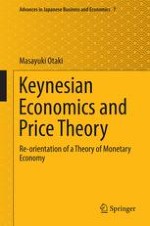2015 | OriginalPaper | Buchkapitel
11. Dexterity as a Source of Economic Growth
verfasst von : Masayuki Otaki
Erschienen in: Keynesian Economics and Price Theory
Verlag: Springer Japan
Aktivieren Sie unsere intelligente Suche, um passende Fachinhalte oder Patente zu finden.
Wählen Sie Textabschnitte aus um mit Künstlicher Intelligenz passenden Patente zu finden. powered by
Markieren Sie Textabschnitte, um KI-gestützt weitere passende Inhalte zu finden. powered by
